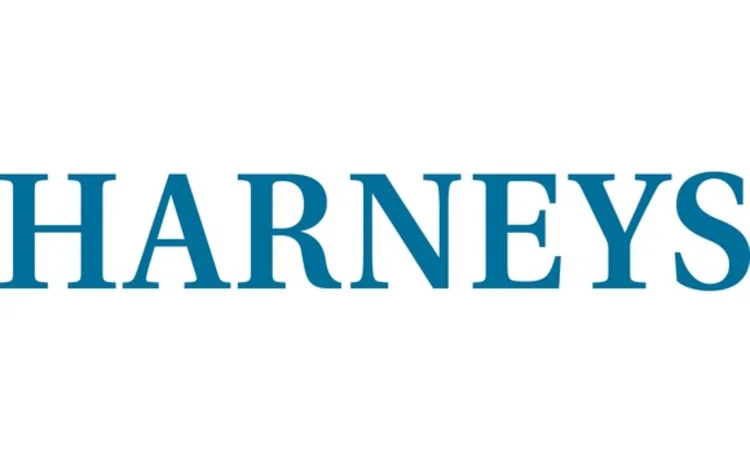
Sponsored Q&A: Harneys

What do fund managers expect from their legal counsel?
JP Morgan’s statement made over a century ago, “Well, I don’t know as I want a lawyer to tell me what I cannot do. I hire him to tell me how to do what I want to do”, remains good advice. In the funds space today, the value add is not so much knowledge of recent regulatory developments and new case law, which should be assumed for lawyers at leading firms, but the level of commerciality and responsiveness demonstrated by a firm’s lawyers.
In particular, fund managers are looking for the following from their lawyers when establishing a new fund.
A simple structure
“Entities must not be multiplied beyond necessity.” Occam
The re are cases where a very bespoke structure is required but, in most instances, fund structures are created out of commoditised document architecture dealing with standard issues. When recommending additional complexity to a fund manager, always consider the downsides of incorporating additional options in terms of investor appetite for a more opaque and complex product.
re are cases where a very bespoke structure is required but, in most instances, fund structures are created out of commoditised document architecture dealing with standard issues. When recommending additional complexity to a fund manager, always consider the downsides of incorporating additional options in terms of investor appetite for a more opaque and complex product.
Just because it is possible to create a hybrid private equity/hedge side-pocketed chimera, doesn’t mean you should be recommending it to fund manager clients. With all due credit to Occam, the optimal structure is the one that remains the simplest while meeting the client’s commercial objectives.
Offering document – market, inform and protect
Investment return was once the only concern for many hedge fund investors, but now much more focus is being placed on the due-diligence process and, save for proprietary information, the operation of the fund must be transparent in the documents. Any offering document should serve the multiple purposes of marketing the fund to investors, explaining the fund’s operation and providing a full disclosure of the material risks of investing in the fund.
There is a natural tension here but standard boilerplate and definitions should be kept succinct and drafted to address the sophisticated investor. The detail should be left for those areas that are of most concern to investors and that create the most potential for conflict – corporate governance, service provider relationships, the procedures for the valuation of assets and, particularly, illiquid assets and the circumstances in which redemptions may be suspended.
If the fund is to appoint an independent director, the nature of the role is not one that is clearly agreed to by market participants, so ensure the offering document expressly delineates what the independent directors will do in practice.
A commercial approach – This is a business
“If you’re trying to achieve, there will be roadblocks. But obstacles don’t have to stop you. If you run into a wall, don’t turn around and give up. Figure out how to climb it, go through it or work around it.” Michael Jordan
Offshore lawyers, in particular, should be looking to clear and not create roadblocks. Rather than demonstrating knowledge through reciting recent case law and identifying problems, lawyers should act in a proactive and creative manner to provide solutions to problems and create a compliant structure that reflects the client’s commercial intention and is delivered on time and on budget.
An interest in the subject
The best funds lawyers have a real interest in the business of trading and investment. In addition to getting to grips with common legal structures and regulatory frameworks, junior lawyers should learn about the business – Victor Niederhoffer’s Education of a Speculator and Jack Schwager’s Market Wizards series are good introductions. Nassim Taleb is always interesting on risk and the fat tail and, although there are more recent market structure works, Trading and Exchanges: Market Microstructure for Practitioners by Larry Harris remains a useful technical text on the structure of markets and the nature of participants.
A client-driven approach
“I like to listen. I have learned a great deal from listening carefully. Most people never listen.” Ernest Hemingway
Listen to and work with the client in the way they prefer – many lawyers prefer emails and bullet-pointed lists over conference calls and face-to-face meetings to resolve outstanding issues, but the best way to progress any project is the way that works best for the client. As an offshore counsel servicing an onshore law firm, be responsive and commercial, don’t play lead counsel but don’t push back drafting responsibilities.
Fees should be transparent and certain, and make sure you spend the time to ensure any assumptions in an estimate are capable of being met. This is a document and a people business – treat the relationships with the same care you spend on the documents.
Why do hedge funds still need offshore fund structures?
The mark of the amateur investor is an expectation that a strong trend is going to reverse – the professional’s de facto assumption is that it will continue. The storms of 2008 left many people prophesying doom for the Cayman Islands model, and a Reuters headline from early 2009, Luxembourg to boom as hedge funds move onshore!, was a view echoed in many leading publications. B
ut 2010 saw more than 1,000 new Cayman hedge funds established and only a handful of Cayman funds move onshore. Whether considering the number of new hedge fund establishments or assets under management, the Cayman Islands dwarfs its nearest European onshore competitors, Ireland and Luxembourg. The trend, in this instance, gives every appearance of continuing. Some of the reasons for this are suggested below.
Does more regulation mean better regulation?
More regulation is not necessarily better regulation. Stability of regulatory framework is of more benefit to investors and managers than a regulatory environment that is in an ever-changing state of flux, which attempts to address every outlier. The Alternative Investment Fund Managers (AIFM) directive, pithily described by The Economist in 2010 as “another European mess”, has taken 26 months to get from its original unclear proposal to its current unimplemented state. The details of the agreed core principles will have to be hammered out in more than 90 secondary implementing measures (the ‘level 2’ legislation) before it can be implemented by Member States.
This year, the European Commission is expected to publish the draft Ucits V directive and there is already speculation the Commission will tighten the applicable investment rules, reversing some of the changes that have made the Ucits vehicle slightly more attractive to hedge fund investors.
The Cayman Islands hedge fund model requires transparency and full disclosure in the offering document, an audit firm that has been vetted and approved by the Cayman Islands Monetary Authority, regular reporting and a properly qualified independent administrator. It is a model that emphasises disclosure over arbitrary prescription, has proved popular and has changed little over the years, giving investors and managers a certain platform for their agreements.
Performance drag – the real risk
In today’s environment of low interest rates and quantitative easing, in which many governments have implemented a managed inflationary policy to reduce their own debt burden and that of banks and major corporates, the real risk for investors is that their investment return is outstripped by inflation. Performance should not, therefore, be sacrificed for some vague belief that investing money in a European product with some arbitrary investment restrictions will mitigate risk or avoid ‘another Madoff’. Madoff was an onshore structure created and operated in an environment that has more pages of securities and investment regulation, and more regulators than any other country.
The best way of managing risk is to do your due diligence on the investment manager; review the strategies, systems, people and track record and don’t rely on arbitrary frameworks and third-party ratings to make your investments. By way of example, the idea that quants at Renaissance Capital will manage risk on a less professional basis than a European manager working within the strictures of a Ucits directive is just not credible. The only certainty of a Ucits investment is a lower return, which is a natural consequence of the increased need for liquidity, convoluted replication of traditional hedge fund strategies and a more complex service provider/fund relationship matrix.
The ultimate stress test of 2008 provides the best guide. The average US domestic equity mutual fund declined by 37.6% in 2008, while the average international equity mutual fund declined by 45.8%. The average hedge fund return of -18.65% – as measured by the Hedge Fund Research Incorporated Fund Weighted Composite Index – was a return far better than most non-cash assets. Managing risk is what hedge fund managers do best and it is not something, in any event, that can be analysed in a binary way, separately from long-term performance. Seeking to impose prescriptive requirements as to permitted asset classes, investment restrictions and methodology may paradoxically increase and not decrease the risk of loss.
A global brand
Cayman Islands lawyers are working in London, the Cayman Islands, São Paolo, Singapore and Hong Kong to service fund managers and law firms wanting to set up Cayman Islands hedge funds in every time zone. Increased workflows and fund set-ups are seen particularly from China, where most leading offshore firms are looking to double the size of their offices in the next few years. Workflows from Brazil, Russia, India and other emerging markets are also increasing on an exponential basis.
These markets have limited interest in a Ucits model, or in any of the alternative onshore fund vehicles, because they are often irrelevant to their investor base. With sluggish to non-existent GDP growth, unmanageable debt levels, a single currency in crisis and civil disorder increasing in troubled European Union countries, this is not a time when the rest of the world is looking to Europe for leadership in regulation. The world is becoming less, not more, Eurocentric. The smart money is on the trend continuing.
The foregoing is for general information purposes only and not intended to be relied upon for legal advice in any specific or individual situation.
[ASSET_TAG_ERROR]
Sponsored content
Copyright Infopro Digital Limited. All rights reserved.
You may share this content using our article tools. Printing this content is for the sole use of the Authorised User (named subscriber), as outlined in our terms and conditions - https://www.infopro-insight.com/terms-conditions/insight-subscriptions/
If you would like to purchase additional rights please email info@risk.net
Copyright Infopro Digital Limited. All rights reserved.
You may share this content using our article tools. Copying this content is for the sole use of the Authorised User (named subscriber), as outlined in our terms and conditions - https://www.infopro-insight.com/terms-conditions/insight-subscriptions/
If you would like to purchase additional rights please email info@risk.net